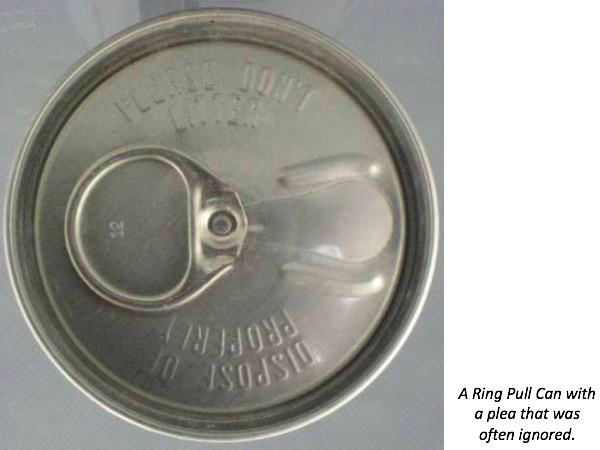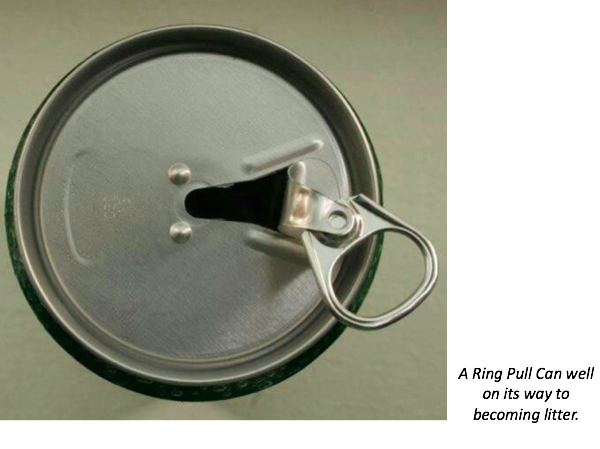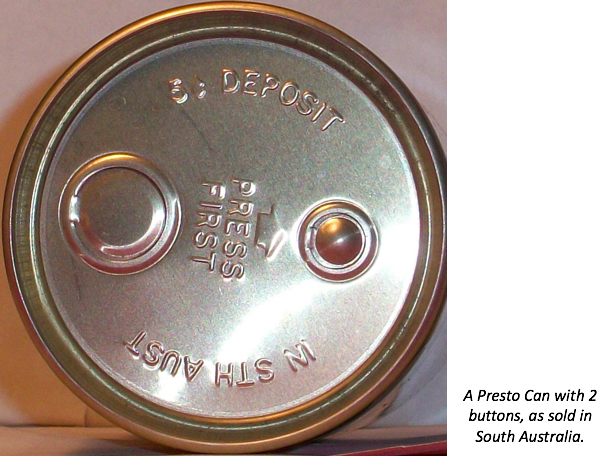In the 1960’s soft drink cans were made of ‘tinplate steel’: steel sheet about half a millimetre thick, coated in tin. Cans were formed with a flat bottom, cylinder sides and solid top which was pierced open by a triangular opener, often with a bottle opener on the other end.
Beer and soft drink makers wanted an easier, self-contained opener. Aluminium manufacturers solved the problem by inventing the ring pull: a single ring which lifted at the centre of the can to release the pressure and then pulled to create an elliptical opening.

The standard steel can was now fitted with an aluminium top. Actually, an 'aluminum' one as the inventers were American. The problem was that the ringpull was then discarded, which led to an enormous litter problem, sharp indestructible pieces that harmed or killed fauna trying to eat it.

Whilst the ring pull was a litter problem for society, the use of aluminium, not steel, was a problem for tinplate steel manufacturers, such as Australia’s BHP. Despite selling more steel, as cans with aluminium ring pulls made it easier to use and therefore more widely sold, they were worried that there was no steel alternative to the ring pull. And they wanted to solve the litter problem.
BHP researchers, looking for an all steel can with an easy opening end, were pushed along in 1968 when the chairman Sir Ian McClennan roughed out a design for a press button end. Early tests at the BHP’s Port Kembla research lab laboratories were promising, but so too were tests on other easy opening ends, including an all-steel ring pull that remained to the can when used.
In 1970 BHP hired Mike Debenham, a designer with the firm IDR. The problem was redefined in three ways: firstly, it had to use currently available grades of tin coated steel and aluminium in high-speed canning machinery; secondly, it would need to be easily used by a customer; and thirdly it should have no detachable part (unlike its litter-making predecessor).
The press button idea continued to be the most promising, but research and testing were required before the final design called ‘Presto’ was confirmed. Presto had two buttons: a smaller one which thumb pressure could be used to release the pressure of a can of beer or soft drink, and a larger button pushed in to provide a pouring hole.

Critically both buttons remained attached to the can as a result of a differentially pressured crease. By 1972 BHP’s Melbourne research laboratories had produced typical cans and sent them for trials all over the world. The two button Presto was favoured over an attached ring pull or a single aperture press button can end as it was easy to use, was safe and reduced pollution.
And hey, Presto was born.
In 1966 BHP invented Colorbond, the world’s most successful sheet steel coating, which came to dominate the tin plate making process. In 2003 BHP demerged their steel-making works, One Steel making hot rolled products in Whyalla and BlueScope making flat steel products in Port Kembla, including an ever-expanding range of Colorbond and tin plate.
Soft drink and beer cans are now all aluminium and an attached ring pull has pushed the Presto button into obscurity, but let’s not forget how the ‘Big Australian’ solved an early pollution problem.
plus 1 / plus one / +one is a collective of designers and artists promoting sustainability and Australian design. You can contact them at [email protected]

